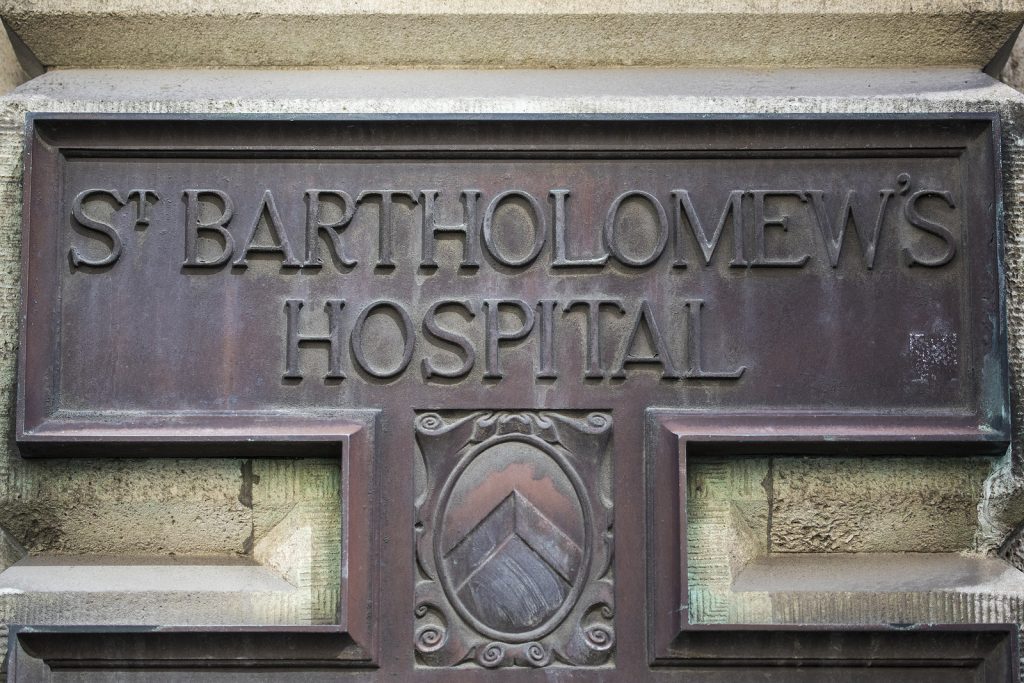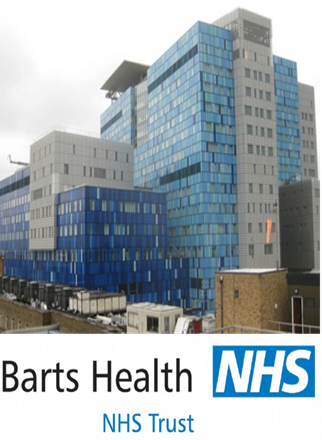Stuart Brown

BartsHealth was in the midst of a serious capacity issue around Referral to Treatment (RTT). The problem was in some part the result of a major IT migration to a new system at Whipps Cross Hospital which has resulted in a major downgrading of confidence in the integrity of the data that the new system was generating – but this was only part of the problem. The simple truth was that the
operational pressures faced by the Trust during the Winer of 2013 had led to an unprecedented rise in elective cancellations from which the Trust has not been able to recover from going in the 3rd Quarter of 2014.
Barts Health is a multisite NHS Trust established on the 1st of April 2012, consisting of six local hospital sites: Mile End Hospital, The London Chest Hospital, The Royal London Hospital, Newham University Hospital, St Bartholomew’s Hospital and Whipps Cross University Hospital delivering Acute medicine, Allergies, Anaesthetics and pain management, Pathology,
Diagnostics, Cardiovascular services, Care of the elderly.
It is also the home of the London Air Ambulance.
The Trust has a large catchment area which translates into a population of approximately 2.5 million. As with all mergers and acquisitions involving large and
complex organisations the transition from the original hospital configuration into Barts Health has been complicated and not without its challenges including occasional setbacks.
Examples of such challenges include the streamlining of IT systems and clinical reporting systems. One area that has been particularly impacted is that of scheduled care and rapid access cancer services. The problems that are manifest are a combination of unreliable data, non-compliance with the Trusts Access and Management – Referral To Treatment policy December 2013, possible capacity constraints and changes in Divisional and
Service management personnel resulting in loss of focus and corporate memory.
The situation at Barts was one of almost overwhelming despair. Pat Rubin, Director of Operations for Surgery and Cancer was struggling to run a £350 million pound Surgical Division with what can only be described a seriously depleted resource pool. Four of the divisions other General Managers had tendered their resignation .


The recovery plan was predicated on an integrated approach across the three key T and O sites –
Royal London Hospital, Whipps Cross and Newham this was essential if we were going to have any chance of delivering a sustainable performance. with the four key stages dovetailing and working together to ’design and implement’ a high performing Orthopaedics service was crucial if BartsHealth was to address the following key objectives:
Reduce waiting times: There are nationally mandated guidelines and rules around waiting times for
treatment (RTT) this recovery plan is designed to return Bartshealth NHS Trust T&O services to a point where we are compliant with the national guidelines;
Maximise capacity – T and O theatre and clinic sessions configured in such a way that we were getting the maximum available capacity and that we used it efficiently.
Temporary measures – Putting in place temporary measures and work arounds in order to address the excessive waiting times patients are currently experiencing. Such measures may include outsourcing patients to the independent sector, realigning scheduling personnel to work direct to the service, putting additional capacity into the system such as the Gateway at Newham.
Basic standards: Getting basic standards right for our patients, by providing safe staffing levels and basic standards of care and attention for our patients is an
integral part of the recovery plan;
Flow – Ensuring that we have sufficient staff, processes and capacity to get our patients into the right beds so that they receive their treatment within a reasonable time and then ensure that they are discharged as soon as it is clinically appropriate. If we can get out patient flow working efficiently we will not have to cancel elec-tives for bed capacity reasons;
CQC – In the light of enhanced CQC scrutiny we need to make sure that whatever we do aligns to and takes account of the requirements outlined in the five domains of the CQC compliance framework of;
Caring, Safe, Well led, Responsive, Effective.
Control – To provide high quality care AND use taxpayers money wisely;
Clinical leadership – Good hospitals are run by good clinicians – Consultants, Doctors, Nurses and Clinical Support staff. This plan is predicated on the ongoing support and leadership of the T and O Consultants and staff.
Data quality within BartHealth proved to be a very challenging issue, mergers of the size and complexity undertaken by Barts understandably threw up a
number of complex problems to overcome.
The migration of source systems to Barts legacy system involved the movement of large and complex databases from one system to another. In hindsight, and being overly critical, these migration programmes were not as robust as they could have been.
Within T and O the fact that we predominantly work across threof the BartsHealth Hospital sites makes T and O one of the largest e services within the Surgery and Cancer CAG. Validation, the process of providing assurance that the position on the pathway/status of the patient is reliable and could therefore be used to provide assurance to the service what the next step is in the patients pathway.
In November 2014 it became obvious that there were a number of different methodologies and varying levels of resource that was initially channeled correctly and not directly aligned to the services, this led to a disjointed approach to validating and actually resulted in very little progress being made in specialties in the early months.
As T and O General manager I lobbied for a team of dedicated validators aligned only to T and O so that we could get some forward motion rather than just ’tread water’.
The Trust executive agreed that our case was robust and worthy of the initiative so we were assigned a dedicated team of 4 validators and a team leader. This team proved to be invaluable.
We were fortunate enough to appoint to the substantive GM’s role for the Trauma and Orthopaedics Directorate from within the Trust establishment. At this point I moved ‘upstairs’ to the Deputy Director of Operations role to help Pat by accelerating the improvements in the Division that would lead to sustainable operational improvements whilst at the same time helping Pat by focussing on some of the strategic requirements of the CAG and the development of the plans for 2015/16 and 2016/17. Another part of the role of the Deputy Director of Operations was to support the patient flow through the two main hospitals – the Royal London and Whipps Cross.
The Surgery and Cancer CAG provided senior managment personnel on a daily basis to support the site manage-ment and to ensure speedy but safe decision making was forthcoming when considering the elective lists and the demand for ITU and Critical Care beds. I also had a key role to play in the efficient and timely re-patriation of patients sent to the Royal London for specialist services
In conclusion this role was a challenging one in a very challenging and fast pace environment in the largest provider of Acute services in England, where the ability to think on your feet is critical, where the ability to deal with staff who are under an enormous amount of stress is essential and where there is a requirement on occasions to interact with distraught patients and their families because you have made a decision, albeit of safety reasons, to cancel their procedure sometime a matter of minutes before they are due to go to Theatre.